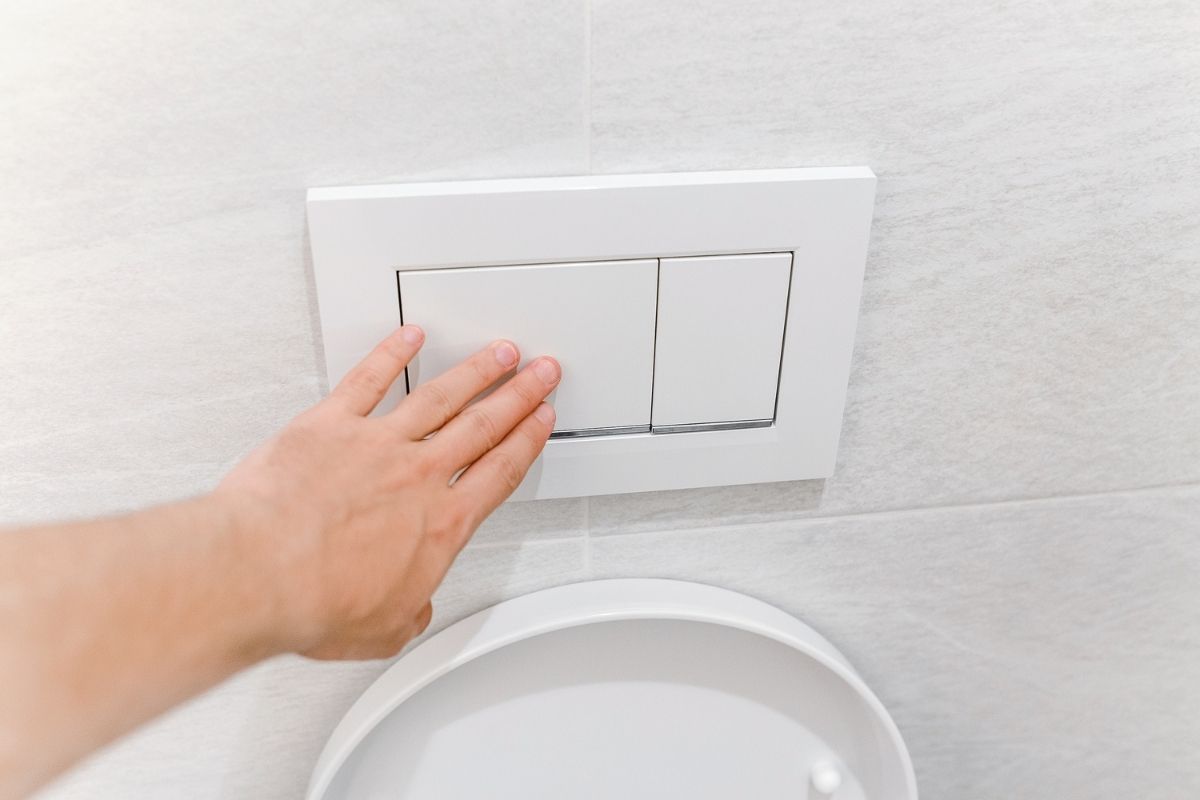If you are considering buying a new dual flush toilet, or already own one. Then you need to get yourself educated on the common problems that you might face and how you can deal with them.
Dual flush toilets are prone to clogging, the flush buttons get stuck, the water tank may overflow, or you might face a constant running toilet. In addition, dual-flush toilets need more cleaning than single-flush toilets, and their repairs can be costly.
Before I move into the details of each problem, you need some brief information on dual flush toilets. Then, will talk about the common problems within the dual-mode toilets, and see how to fix the problem in each case.
Dual Flush Toilet
A dual flush toilet, as the name suggests, means you get two flushing options. One is a strong flush and the other is weak. The strong flush is usually used to get rid of solid waste while the weak one is for the liquid waste. However, you may use both functions simultaneously.
#1 Frequent Clogs
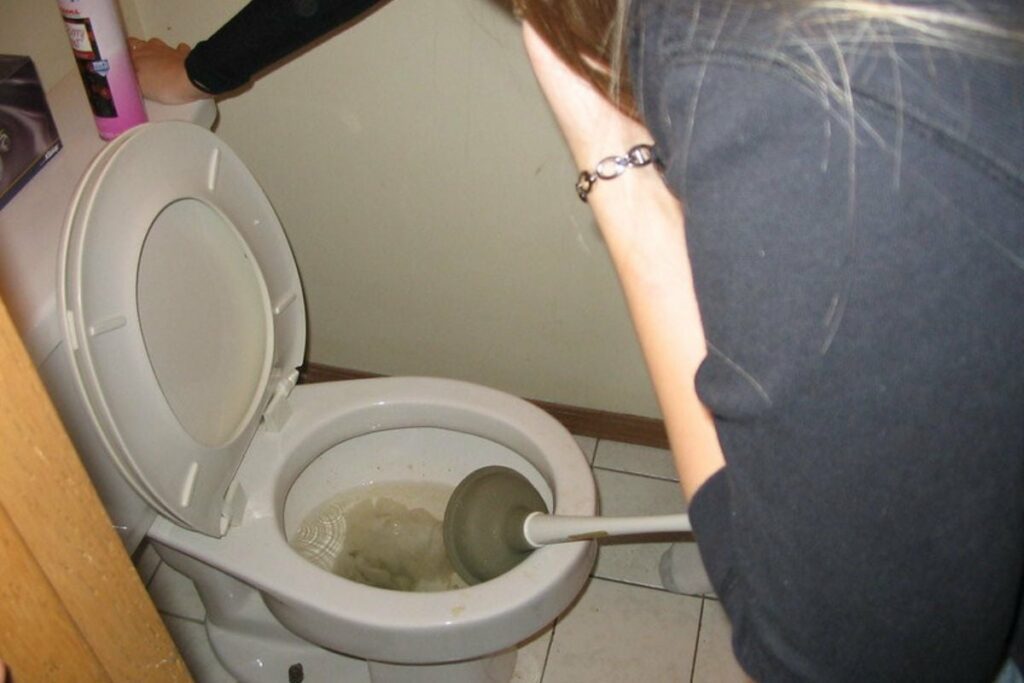
In contrast to single-flush toilets, dual-flush toilets are more prone to become clogged if they are linked to an improper waste drainage system.
When you install a dual flush toilet on a drain that has a very small diameter, there is a good possibility that it may clog up frequently. This is because the majority of conventional flush toilets require a lot of water to flush waste, and because of this, they can operate efficiently on drain pipes with a relatively small diameter.
Secondly, using the low flush option for excessive solid waste might cause the toilet to clog.
How to avoid clogging in Dual Flush Toilets?
- If you want that your dual flush toilet doesn’t clog often, then don’t throw any foreign objects that will dissolve in water and likely block your drain pipe.
- To avoid your toilet being clogged, you can place a trash can in the bathroom near the toilet. You can throw away any non-flushable items into it.
- Installing the dual-flush toilet on a plumbing system that is quite old is a mistake. So, if the drain pipes are small, then the dual flush system might not be a viable option for you.
- Don’t use the low volume setting to flush solid waste, even if it seems to get rid of everything in the toilet bowl.
- If you flush far more waste down the toilet at once, it might clog the pipes. Therefore, you should flush the toilet twice to get rid of everything and let it all go down the drain.
#2 Water Runs after you Flush

Sometimes, in dual flush toilets, the water may keep running constantly after you flush the toilet. If the toilet tank is continuously being refilled, either the flush valve flapper seal is loose or the water inside the cistern is leaking out via the overflow tube.
Now, to check where the flaw lies, place a few drops of food coloring into the tank. Colored water entering the bowl indicates a problem with the flush valve or flapper mechanism, whereas clear water indicates an issue with the fill valve or overflow tube system.
How to fix the dual flush toilet that constantly runs water?
Flapper and seal issues, whether from wear or misalignment, are a common source of leaks in both single-flush and dual-flush toilets. These leaks cause the water to run constantly down the tank. Since the flapper is made of rubber or silicone, it degrades over time, becoming brittle or porous. In this case, the only fix is replacing the rubber flapper with a new one.
Similarly, if the fill tube is at fault, it needs to be replaced since it can’t be repaired.
#3 High or Low Water Level in Tank
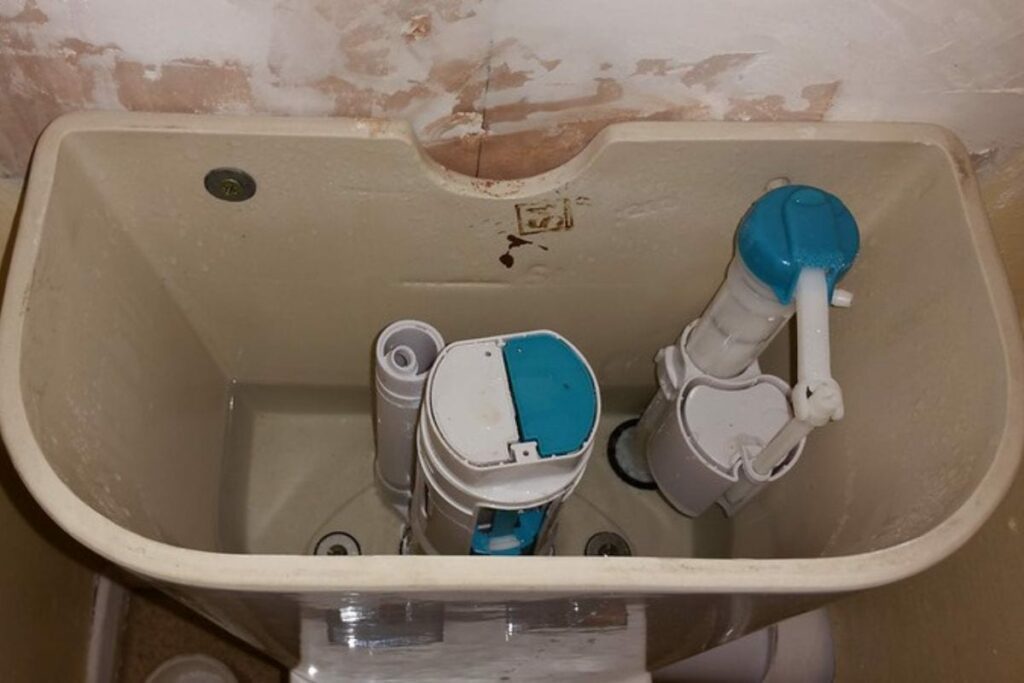
Water problems in the tank have also been observed commonly. At times, the water level in the cistern gets too high that it overflows through the tank. The possible cause is the incorrect positioning of the float/fill valve assembly.
Also, occasionally, the water in the tank gets too low, which results in a very weak flush. This usually happens when the fill tube is ruptured or the float is at the lower position. When the fill tube is bad, it cuts off the water supply before the tank has filled fully.
How to fix the issue of high/low water levels in the Tank?
The first remedy to address the water level issues is to check the position of the float mechanism. Depending on what fill valve mechanism is installed in your toilet, you can either raise or lower the float.
In case, there is a screw mechanism, you can turn it clockwise to raise the float and counterclockwise to lower the float.
However, if the float is attached to a rod, bending it upward or downward would fix the problem. In case the float cup or fill tube is ruptured, you will need to replace the whole fill valve mechanism, and that may require professional help.
#4 High Water Level in the Bowl
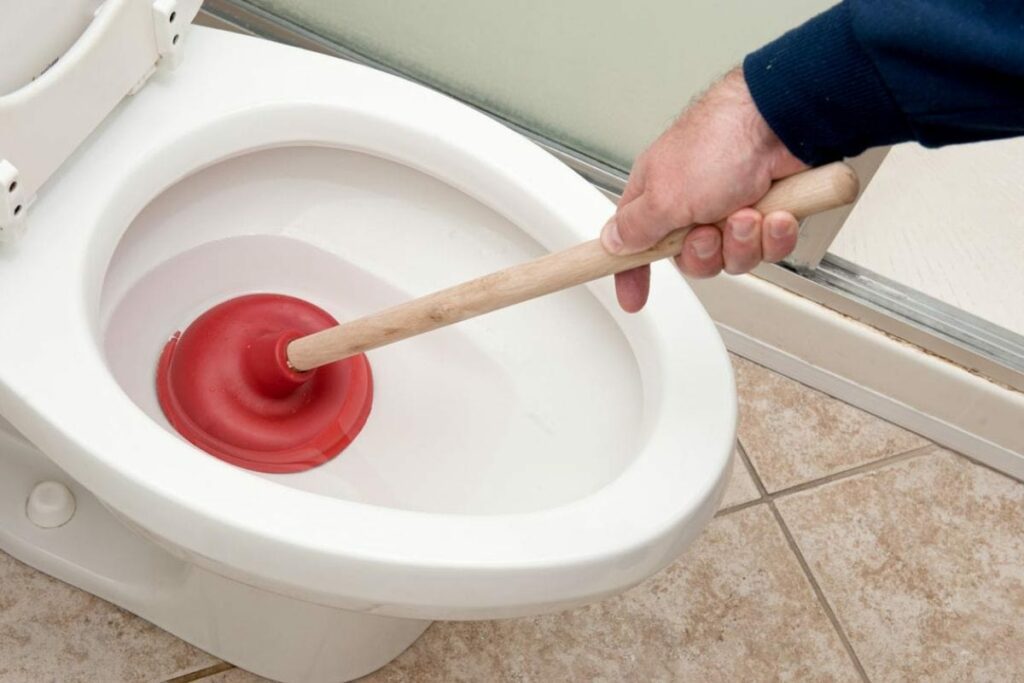
A partial or total clog in the toilet’s drain might be the source of an abnormally high-water level in the bowl between flushes.
If you suspect a clog in your toilet bowl, dumping a pail of water into the bowl is an easy way to check. If the water level is persistently high, there is a total blockage, and the magnitude of the blockage may be determined by how quickly the water drains.
How do fix a clogged toilet bowl?
Whether the obstruction is little or severe, it must be cleared out immediately. Firstly, you can use the toilet plunger to get rid of the obstruction. If that doesn’t work, then you can go with an auger.
#5 Need More Cleaning
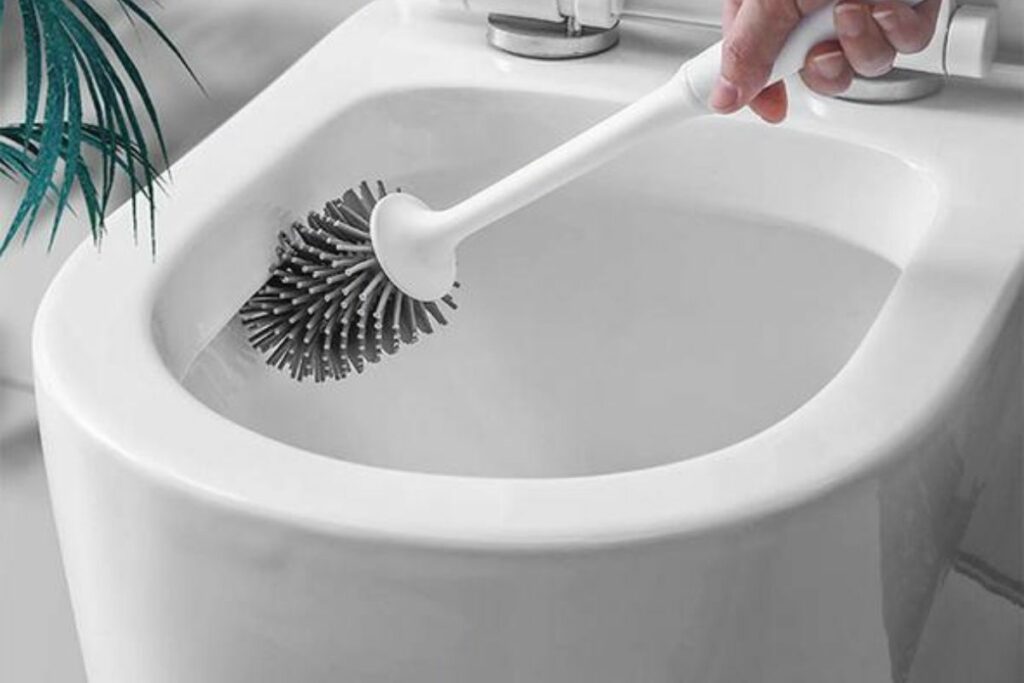
Unlike single flush toilets, dual flush ones require more cleaning. So, always keep a toilet brush nearby.
Since these low-flow toilets have reduced water consumption, they require unobstructed access to the water supply through the rim’s holes. When water is scarce, it is especially important to keep the toilet clean so that as little water as possible is wasted.
Similarly, flushing with less water means, that some of the bacteria may remain. Those germs in your toilet that you can’t see will multiply rapidly. Hence, constant cleaning with chemical cleaners is required.
#6 The Conundrum of the Two-Button Toilet

Many modern dual-flush toilet models include buttons rather than handle levers to activate the flushing process. Since the buttons are on the top of the tank, children usually have difficulty finding them.
The elderly and those with physical impairments may have difficulty pressing buttons that are too stiff. Additionally, the buttons may also get caught, causing the toilet to run endlessly, which wastes water and is expensive.
Guests unfamiliar with dual flush toilets can get confused by versions that do not clearly mark the high volume and low volume flush controls. And end up selecting the wrong flushing option, causing the toilet to clog.
Solution:
To prevent people from pressing the wrong button in their search for a restroom, put a small label on or near each button. This will help people identify the appropriate button to press, or at least increase the likelihood that someone will see it and figure out how to use it correctly.
#7 Expensive to Repair
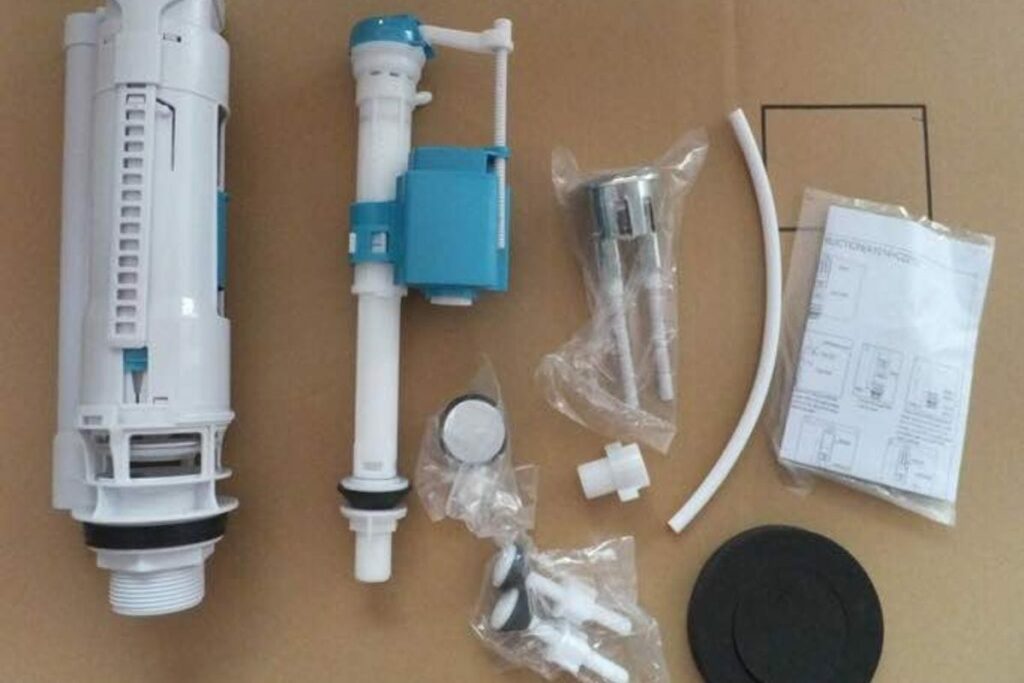
In earlier days, when dual flush toilets were introduced they were much more expensive than their counterparts. However, today you will find both of these in the same price bracket.
But to repair a dual flush toilet still cost more than a single flush toilet because the dual one has two mechanisms installed inside it. I mean that there are two flushing mechanisms, so a greater chance of turning bad. That means more repairing costs. However, if you have slight plumbing knowledge and are planning to fix the issues yourself. This may not be a concern for you.
Final Words
There is no harm in buying a new dual flush toilet. However, before you decide to buy one, you need to know what potential problems you might have to deal with. I hope that this article will help you to make an informed decision.

Amos Christen graduated with a bachelor’s degree in Interior Design from Drexel University — Philadelphia, PA. Since 2003, Amos has worked with top interior design professionals in this area, including architects and interior/graphic/lighting designers. As a skilled interior designer, Amos Christen is highly versed in fine arts and crafts and uses that to supplement his main area of expertise. He often publishes articles related to home décor on several websites, including Sprucetoilets.com, Sprucebathroom.com, and Mybesuitedhome.com. He also contributes to leading interior design magazines.
